Depending On Your Sunflower Type, Deadheading Might Extend The Flowering Season

ANNUALS > SUNFLOWER > DEADHEADING
Reviewed By COLIN SKELLY

Colin is a Horticulturist and Horticultural Consultant with experience in a range of practical and managerial roles across heritage, commercial and public horticulture. He holds the Royal Horticultural Society’s Master of Horticulture award and has a particular interest in horticultural ecology and naturalistic planting for habitat and climate resilience.
IN THIS GUIDE
SUNFLOWER GUIDES
Container Growing
Deadheading
Drooping
Harvesting
Sowing
Support
Varieties
Many people regard deadheading as a tiresome and unnecessary activity, and it is true that your sunflowers will survive just fine if you skip it.
However, there are a host of benefits to be enjoyed by spending a few minutes doing so once or twice during the blooming season.
All it requires is just a small investment of time, following these individual steps:
- Sanitise your tools (ideally with rubbing alcohol).
- Get the timing right – lop off flowers when they look tired and past their best.
- Look for the first set of leaves below the flower head.
- Make the incision just above these leaves – ensuring you don’t cut away any foliage.
- Sweep up the sunflower debris.
- Repeat again later in the season on your plants.
For those who still don’t feel confident taking on the task from these instructions alone, I’ve delved into each step in greater detail below.
| Difficulty | Easy |
| Equipment Required | Pruners, gardening gloves, cloth, isopropyl alcohol |
| When To Deadhead | Summer to Autumn |
Why Deadhead Sunflowers?
The main advantage of deadheading is bringing a halt to seed production.
Why is this desirable?
Well, it will divert the plant’s energies back towards blooming, ensuring a longer flowering season.
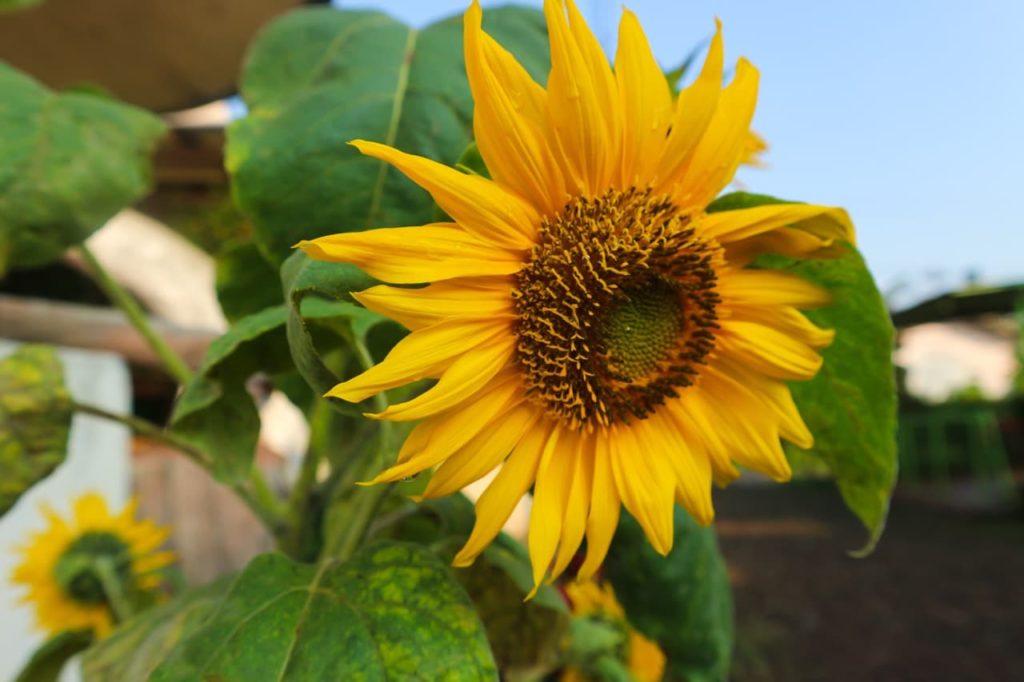
“Large single-headed sunflowers will not need deadheading, but many sunflowers will typically have many smaller flowers that will benefit after the first, often larger, flowers have bloomed,” says Colin Skelly, a Horticultural Consultant.
“Deadheading will extend the season and provide many smaller flower heads for seed saving or wildlife.”
It will also prevent self-seeding which will make the sunflower less attractive to pests.
Finally, deadheading also carries the benefit of keeping your sunflower display neat and tidy.
1) Sanitise Your Tools
Speaking from personal experience, there’s nothing worse than trying to extend your plant’s blooming cycle, but actually endangering its life through the spread of bacteria!
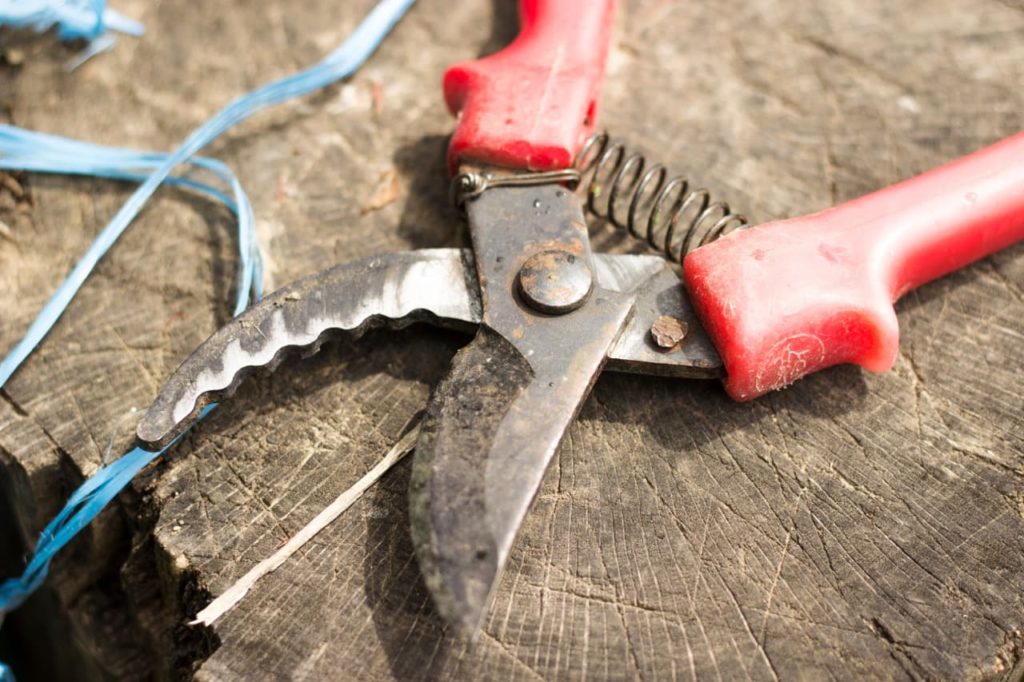
For that reason, sanitising your tools is of paramount importance.
2) Get The Timing Right
Successfully deadheading sunflowers involves removing fading blooms before they have a chance to produce seeds.
This means being ruthless with any flowers that don’t quite look their best, that have been gnawed at by pests or that are jostling for space with other healthier blossoms.

On the other hand, if you wish to save the seeds for propagation or bird-feeding purposes, you can wait until the reverse of the sunflower head has turned yellow.
Save these after pruning and hang them upside down in a dry location with good ventilation to allow the seeds to fully mature.
3) Identify The First Set Of Leaves
Once you have identified the sunflower you’re going to deadhead, look down its stem to locate the first set of leaves that sprout from the stem beneath the flower head.
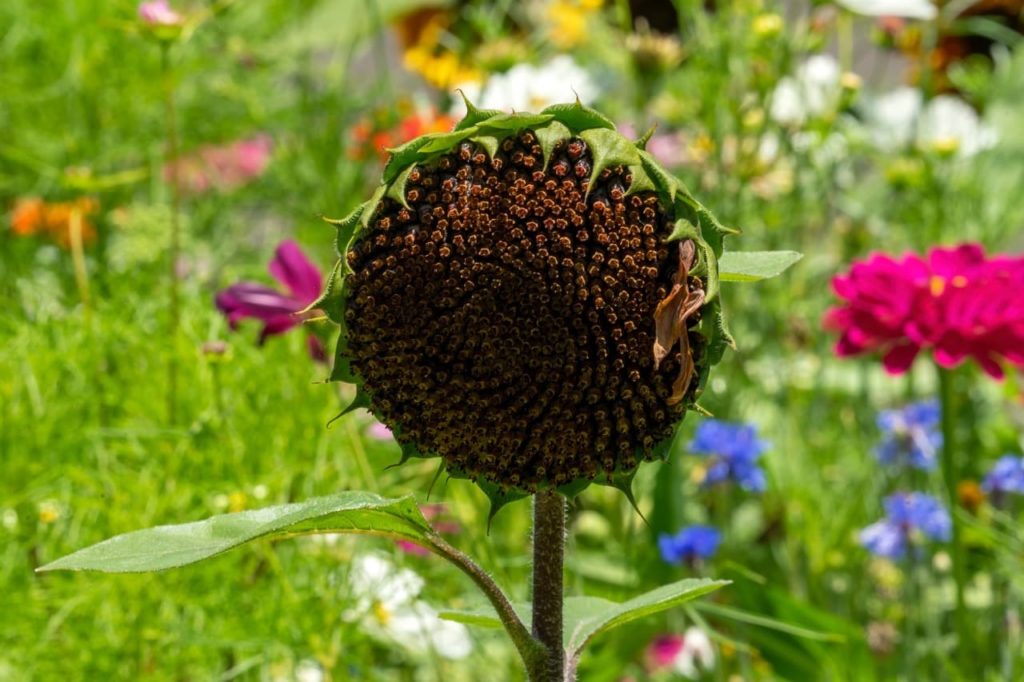
This is where you’ll make the cut.
If the sunflower in your care is a multi-stemmed variety, you’ll need to repeat this process with every individual sunflower and look down at it to ascertain where it splits off from the main stalk.
4) Make The Incision
With one hand, grasp the stem firmly but gently to ensure you don’t accidentally uproot or otherwise damage the plant.
With the other, use your pruners to make the incision just above the leaf node.
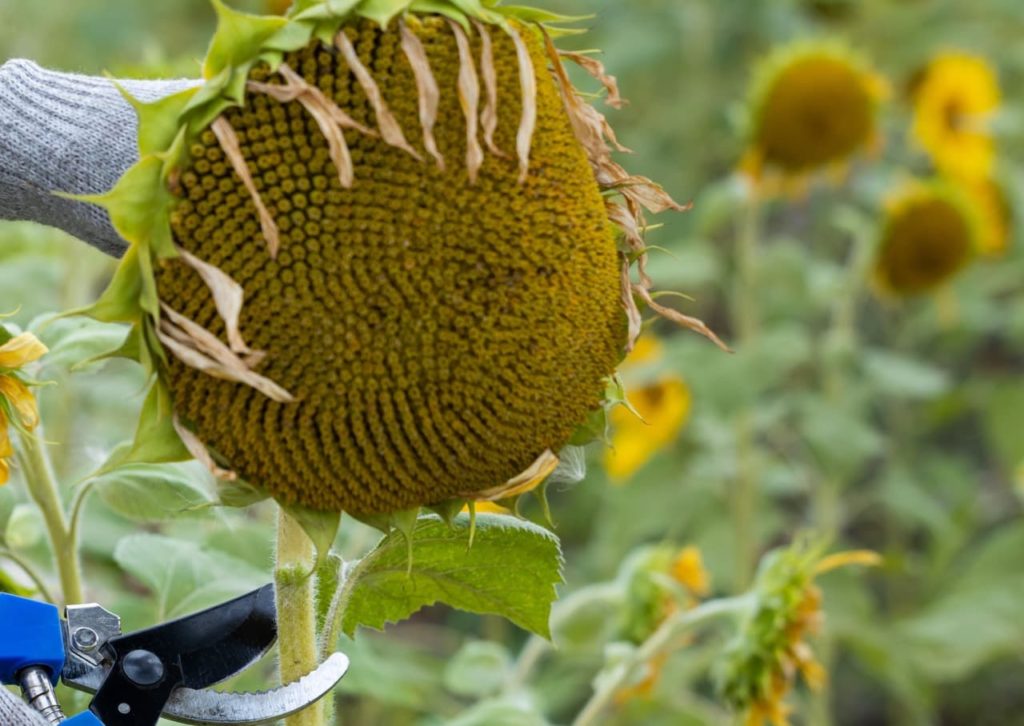
You should make the incision at a 45° angle or one close enough to that gradient.
This will prevent rainfall from accumulating atop the stem and from adversely damaging the plant’s health.
5) Sweep Any Debris
Once you have finished deadheading, it’s highly important to remember to sweep up all the flower heads, stems and foliage that have fallen from it during the process.
There are a number of reasons why this is a sensible addition to your routine.
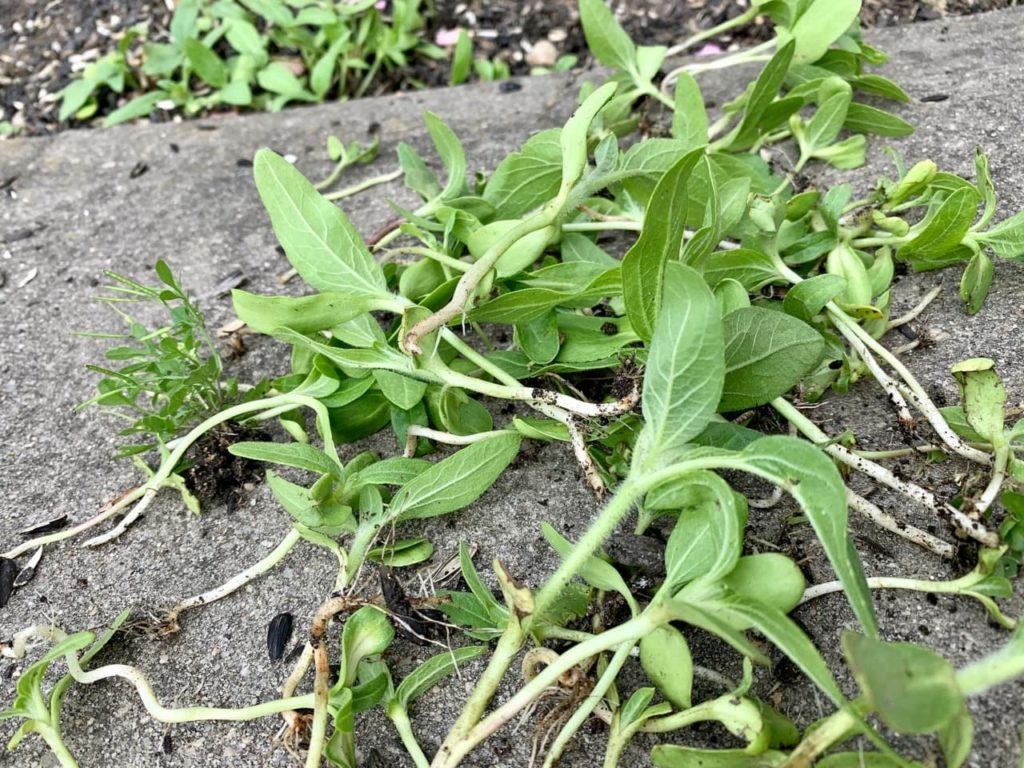
Firstly, disposing of the debris will make the plant look tidier and more attractive, as well as improve air circulation and reduce the chance of fungal infections.
What’s more, it will also give you access to any seeds inside the spent flower heads if you wish to harvest them, or at least some good-quality organic material for composting if you don’t.
6) Repeat Later In The Season
Depending on the cultivar of sunflower you have selected, the growing conditions in your garden, and the climate in that particular year, you might find that deadheading your sunflowers just once is enough to ensure they enjoy a long and happy blooming season.

However, robust plants in optimal conditions will replace the blooms you have removed with reasonable rapidity.
For this reason, I always like to perform an initial deadheading round in mid to late summer, before repeating the process again in autumn.
That way, I keep my plants looking impressive for as long as possible.

